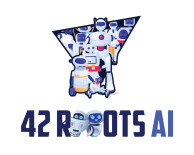What is a Large Language Model (LLM)?
Large Language Models are AI models that are trained with massive amounts of text data.
The “Large” refers to the amount of parameters (sort of like neurons) that comes out of this training process.
GPT-3 had, for example, 175 billion parameters. While we don’t know for sure, it seems likely that GPT-4 has over 1 trillion parameters and cost a lot more than $100 million to train.
What are the Top Large Language Models?
OpenAI seems to have a significant lead with LLM’s. Specifically, GPT-4, at the time of writing this in May of 2023, is by far and away the most capable LLM.
Others are certainly working to unseat OpenAI. Huggingface, Google, and many other companies have competant AI language models.
What Can LLM’s Do?
LLM’s are great at writing AI content, brainstorming, planning, data analysis, chatting, logic and reasoning, and quite a bit more!
How do LLM’s Work?
Here’s a helpful video on understanding how Large Language Models work:
Are ChatGPT, GPT-3, GPT-3.5, and GPT-4 LLM’s?
Yes, ChatGPT and all of OpenAI’s text to text AI models are large language models.
Is BERT a Large Language Model?
Yes, BERT, is an LLM. BERT stands for “Bidirectional Encoder Representations from Transformer.” BERT was released by Google in 2018.
Do LLM’s Hallucinate?
Yes, one of the issues with Large Language Models is that they hallucinate.
See Also: Narrow/Weak AI Models, AI Models that Generate Music

